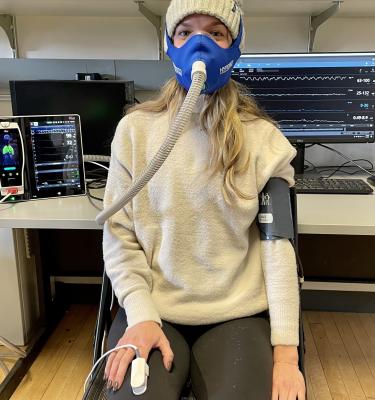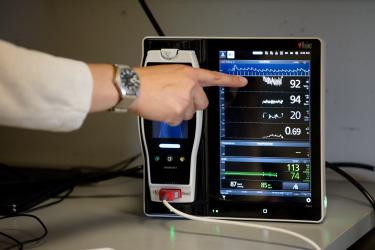Acute Intermittent Hypoxia

Project Overview
Acute Intermittent Hypoxia (AIH) is a neuromodulatory intervention that involves brief, controlled exposures to low-oxygen air to stimulate neuroplasticity. In this study, participants undergo 15 cycles of AIH, each consisting of 90 seconds of hypoxic air exposure followed by 60 seconds of room air. The AIH protocol used in this study has been validated in both able-bodied and clinical populations as a safe and effective approach to promoting neural recovery.
Assessing Physiological Responses to AIH
To evaluate the safety and effectiveness of AIH, we track:
- Oxygen saturation (SpO₂): To ensure participants remain within a safe hypoxic range.
- Blood pressure and heart rate: To assess cardiovascular stability and autonomic responses to AIH.
- Individual variability: By analyzing participant-specific responses, we can refine AIH dosing for personalized neurorehabilitation strategies.
These physiological measures provide critical insights into how individuals respond to AIH, informing adjustments to optimize efficacy and safety.

Significance
AIH has been shown to enhance motor function in individuals with chronic incomplete spinal cord injury (iSCI), a stage where spontaneous recovery typically plateaus. When combined with walking training, AIH produces cumulative benefits, highlighting its potential as an adjuvant therapy for gait rehabilitation. By refining AIH protocols and dosing strategies, this study aims to improve its clinical application, making it a more effective tool for neurorehabilitation and functional recovery.

